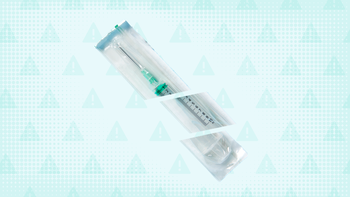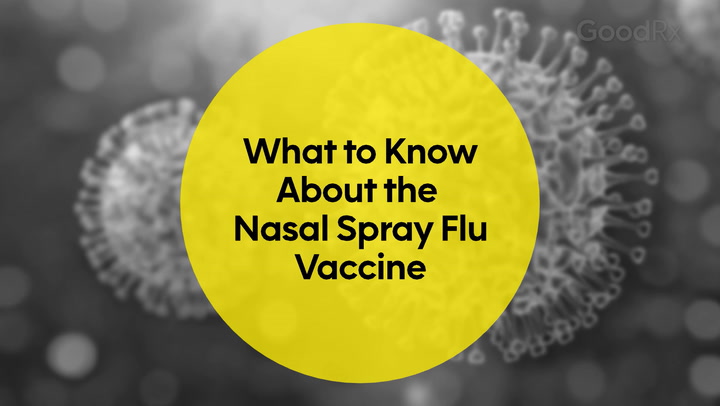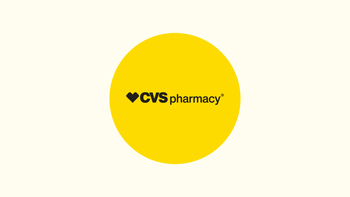
Can You Get a Flu Shot If You Have an Egg Allergy?
Key takeaways:
Many flu vaccines are made using chicken eggs. For several decades, people with egg allergies were recommended to avoid getting the flu vaccine. But this is no longer the case.
Most people with egg allergies can safely receive the annual flu vaccine. Many clinical studies have found that most people allergic to eggs don’t have a reaction to flu vaccines.
There are two egg-free flu vaccines available for the 2023-24 flu season: Flucelvax Quadrivalent and Flublok Quadrivalent. GoodRx can help make these vaccines more affordable.
Access savings on related medications
Table of contents

An egg allergy is no longer a reason to avoid getting your annual flu shot. For more than 70 years, people with egg allergies were told to avoid getting a flu shot, as most flu vaccines are grown in eggs and may contain a tiny amount of egg protein. This recommendation changed during the 2016-2017 flu season, after several research studies showed flu shots to be safe for almost all people with egg allergies.
The CDC, American Academy of Pediatrics, and American Academy of Allergy, Asthma, and Immunology now recommend that everyone — whether they have an egg allergy or not — get a flu shot each year (with very rare exceptions).
Why is there egg in some flu vaccines?
The most common way flu shots are made is by using eggs in the production process. The CDC or another World Health Organization partner provides private manufacturers with selected flu viruses, which are then injected into fertilized chicken eggs so the viruses can multiply.
Search and compare options
After several days, fluid containing the viruses is taken from the eggs. The viruses are then processed in different ways depending on the type of flu vaccine that’s being made. And it’s possible that a small amount of egg protein may remain in the final vaccine.
As you can imagine, many chicken eggs are required to produce vaccines this way, and it can take some time to grow the flu viruses this way. To make the process more efficient, manufacturers have developed newer methods that don’t involve eggs at all. More on this below.
What are the ingredients in most flu vaccines?
These are some of the components found in most flu vaccines:
Adjuvants are ingredients like aluminum salts that boost the body’s immune response to the flu shot.
Stabilizers like sugar and gelatin ensure that the vaccine is stable after it’s made and that it doesn’t lose effectiveness before it’s used.
Formaldehyde is used in the manufacturing process to inactivate live flu viruses. Most of it is removed before the vaccine is packaged and distributed. We actually make formaldehyde naturally in our bodies, and the amount of formaldehyde in vaccines is so small in comparison that it’s not a safety concern.
Antibiotics like neomycin are used to prevent bacteria from contaminating the vaccine. Antibiotics that people are most likely to be allergic to — like penicillin — aren’t used in vaccines.
Preservatives prevent dangerous bacteria and fungi from contaminating vaccines. One example is thimerosal, which is found in vaccine vials that contain multiple doses (multi-dose vials).
Latex is another component you should be aware of. While it’s not in the flu vaccine liquid itself, it’s sometimes used to make the rubber stopper of the vaccine vial or the plunger of the syringe used to give you the shot. Allergic reactions to latex from a flu shot are rare, but if you have a latex allergy, be sure to mention it to your healthcare provider.
Keep in mind: Flu vaccines only contain the ingredients they need to be as safe and effective as possible, and the FDA tests and approves the vaccines before they are used by the public.
Can egg protein in flu vaccines cause an allergic reaction?
If you’ve experienced an allergic reaction to eggs, it’s understandable to be nervous about getting a vaccine that may have egg protein in it. The truth is, allergic reactions to the egg protein in flu vaccines can happen, but they are extremely rare. According to CDC research, only 10 in over 7 million vaccinations have ended in a serious allergic reaction — and most of these cases were not related to egg protein in the vaccine.
If you have an egg allergy, you can receive any flu shot. Here are the CDC’s recommendations based on how severely you react to eggs:
If you’ve only experienced hives (a red, itchy skin rash) after being exposed to eggs, you can get any flu vaccine.
If you’ve experienced a severe allergic reaction to eggs before (meaning any symptoms other than hives, including nausea, dizziness, or difficulty breathing), you can still get any flu vaccine. You’ll just want to make sure to get vaccinated in a medical setting, like a healthcare provider’s office. Make sure your provider knows about your egg allergy and is able to manage an allergic reaction if it happens. Two egg-free vaccine options are also available.
Are flu shots worth the risk?
Yes. The CDC considers the risk of an allergic reaction to be less concerning than the risks that come with getting the flu. Serious and life-threatening complications can happen from getting the flu, including pneumonia, inflammation of the heart, and respiratory failure.
Getting the flu shot is especially important for people who have a high risk of experiencing these complications, such as:
Adults aged 65 and older
Pregnant women
People with weakened immune systems
People with certain health conditions (like blood disorders, chronic lung disease, and heart disease)
Do all flu shots contain egg protein?
No. If you’re still concerned about egg allergies, there are two flu vaccine brands this year that are completely egg-free: Flucelvax Quadrivalent and Flublok Quadrivalent. They don’t contain egg protein because they are made using newer manufacturing processes that don’t require growing flu viruses inside of eggs.
Also, neither Flucelvax nor Flublok use antibiotics in their manufacturing process. Flublok and the single-dose version of Flucelvax contain no preservatives. The version of Flucelvax that comes in multi-dose vials contains thimerosal as a preservative.
If you’re wondering which flu shot makes most sense for you, talk to your healthcare provider or pharmacist to help you decide.
Flucelvax Quadrivalent
Flucelvax Quadrivalent is made with cells derived from mammals. These cells are grown in labs and are treated with the flu viruses selected by the CDC for that year’s flu season. After a few days of replicating inside of those cells, the flu viruses are extracted and purified. Then, a component of those flu viruses is used for the vaccine.
Flucelvax Quadrivalent is approved for adults and children aged 6 months and older.
Flublok Quadrivalent
Flublok Quadrivalent is made with a piece of DNA from a flu virus. That DNA is combined with DNA from another virus that allows it to be copied over and over again inside insect cells. Those insect cells produce proteins from the flu virus DNA, which get purified and placed into the vaccine.
Flublok is approved for adults ages 18 years and older.
Is there any reason not to get a flu shot?
Except in very rare situations, the CDC recommends that everyone 6 months of age and older get a flu shot every year.
The rare exceptions include:
Children younger than 6 months of age
People with severe, life-threatening allergies to flu vaccines or any ingredient in the vaccine, like gelatin or certain antibiotics
Even if these don’t apply to you, it’s always smart to be open with your healthcare provider about your current and past medical conditions and any medications you’re taking before you get your flu shot. They’ll work with you to choose the best flu vaccine for your situation.
How to save on Flucelvax and Flublok
Both vaccines are covered by most insurance plans. But if you do pay out of pocket, GoodRx can help save on your flu vaccine.
GoodRx can help you save 45% off the average retail price of the Flucelvax and 20% the retail price of Flublok. Flucelvax’s price at certain pharmacies is as low as $ with a free GoodRx discount. Flublok’s price at certain pharmacies is as low as $ with a free GoodRx discount.
The bottom line
An egg allergy is no longer a reason to avoid getting an annual flu vaccine. Many clinical studies have shown that most people with egg allergies can safely receive any flu shot. If severe egg allergies are a concern, there are two egg-free flu vaccines available: Flucelvax and Flublok. Speak with your healthcare provider or pharmacist to decide which option is right for you.
References
American Academy of Pediatrics. (2021). American Academy of Pediatrics releases recommendations for prevention of influenza for 2021-22.
Armstrong, C. (2016). ACIP updates influenza vaccination recommendations for 2016–2017. American Family Physician.
Centers for Disease Control and Prevention. (2022). How influenza (flu) vaccines are made.
Centers for Disease Control and Prevention. (2022). Cell-based flu vaccines.
Centers for Disease Control and Prevention. (2022). Flu symptoms and complications.
Centers for Disease Control and Prevention. (2022). Flu vaccine and people with egg allergies.
Centers for Disease Control and Prevention. (2022). People at higher risk of flu complications.
Centers for Disease Control and Prevention. (2022). Recombinant influenza (flu) vaccine.
Centers for Disease Control and Prevention. (2022). Who should and who should not get a flu vaccine.
Greenhawt, M., et al. (2018). Administration of influenza vaccines to egg allergic recipients: A practice parameter update 2017. Annals of Allergy, Asthma, and Immunology.
Seqirus Inc. (2023). Flucelvax quadrivalent [package insert].
Sanofi Pasteur Inc. (2023). Flublok quadrivalent northern hemisphere [package insert].
U.S. Food and Drug Administration. (2019). Common ingredients in U.S. licensed vaccines.
























